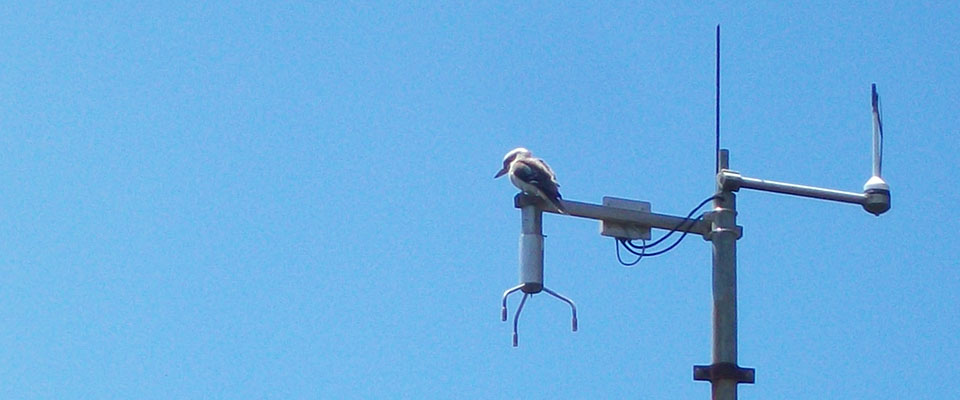Pollutants measured in the Latrobe Valley Air Monitoring Network (LVAMN)
Oxides of nitrogen in air
Nitrogen dioxide is known to affect the throat and the lungs. In levels encountered in polluted air, people with respiratory
problems, particularly infants, children and the elderly, may be affected. People with asthma are often sensitive to
nitrogen dioxide.
Sources of nitrogen dioxide
The main source of oxides of nitrogen in the urban atmosphere is the combustion of fossil fuels (petrol, diesel, coal, gas).
Oxides of nitrogen can be in two forms - nitric oxide, which is not harmful to human health, and nitrogen dioxide,
which is harmful. Nitrogen dioxide may be emitted directly, but it is also formed in the atmosphere from nitric oxide.
Current standards for nitrogen dioxide
The current standard for nitrogen dioxide is 0.12 ppm (parts per million) for one hour and 0.03 ppm for one year.
Goal for nitrogen dioxide
The one-hour standard should not be exceeded more than once (one day) per year. The one-year standard should not be
exceeded.
Ozone in air
Ozone occurs in the upper atmosphere, where it serves a useful purpose in protecting us from UV radiation. Ozone can
also occur near the ground where we breathe. Ozone is very reactive, affecting the linings of the throat and lungs,
restricting the air passages and making breathing difficult. It also increases the risk of respiratory infections.
Ozone is of greater concern for the elderly and those with existing lung disease.
Sources of ozone
Ozone is the main active element in summer smog, which forms around cities on sunny days with light winds.
Ozone is formed in air by reactions between hydrocarbons and oxides of nitrogen. Some hours of strong sunlight are
required for high levels of ozone to form. Sources of the emissions from which ozone is formed are widespread and
include:
- automobiles
- industry
- power stations
- bushfire smoke
- commercial and domestic activities.
Current standards for ozone
The current one-hour and four-hour standard levels for ozone are 0.10 ppm (parts per million) and 0.08 ppm respectively.
Goal for ozone
The one-hour and four-hour ozone standards should not be exceeded on more than one day per year.
How much ozone do we detect in Victoria?
In recent years levels have remained below the standards except when bushfire emissions have caused ozone peaks.
Sulfur dioxide in air
Sulfur dioxide is an irritant gas that attacks the throat and lungs. Its effect on health is increased by the presence of
airborne particles. Prolonged exposure to sulfur dioxide can lead to increases in respiratory illnesses like chronic
bronchitis.
Sources of sulfur dioxide
The main sources of sulfur dioxide are coal-fired power stations, smelting of aluminium and other metals, and exhaust
from diesel vehicles.
Current standards for sulfur dioxide
The current one-hour, 24-hour and one-year standards for sulfur dioxide are 0.20 ppm (parts per million), 0.08 ppm
and 0.02 ppm respectively.
Goal for sulfur dioxide
The one-hour and 24-hour standards should not be exceeded on more than one day per year. The one-year standard
should not be exceeded.
How much sulfur dioxide do we detect in Victoria?
Significant concentrations of sulfur dioxide are only detected in Victoria in the vicinity of large industrial sources.
Particles in air
Particles may be solid matter or liquid droplets. Particle sizes are measured in micrometres which equals 1/1000 of a
millimetre. Particle levels are measured in terms of the total mass of particles in a cubic metre of air, in units of
micrograms per cubic metre.
There are three ways particles are measured:
- PM10 (mass of particles smaller than 10 micrometres in size)
- PM2.5 (mass of particles smaller than 2.5 micrometres in size)
- Visibility reduction, measured with the airborne particle index (API).
Health effects of particles
In general, the smaller the particle, the greater its effect, as smaller particles can penetrate further into the lung to
cause harm. Particles can aggravate existing lung and heart diseases, leading to increased hospital admissions and
emergency room visits, and sometimes premature death. Airborne particles have also been associated with decreases
in lung function, worsening of asthma and alteration in the body’s defence and lung clearance mechanisms.
Sensitive members of the population include the elderly, children and people with existing lung or heart disease.
Health benefits will result from any reduction of particle concentrations, whether or not the current levels are above
or below the limit values.
Sources of particles
Particles result from all sorts of combustion. They are emitted from industrial processes, motor vehicles, domestic
fuel burning and industrial and domestic incineration. Mechanical disturbance of the earth (quarrying & mining) can
also release particles into the air. Dust particles can also be lifted into the air as cars and trucks travel on roads,
especially unpaved roads. Natural sources of particles include bushfires, windblown dust and salt spray from the oceans.
Current standards for particles
The current 24-hour standard for PM10 is 50 micrograms per cubic metre. The one-hour standard for visibility-reducing
particles (minimum visual distance in dry air) is 20 kilometres. There are also advisory reporting standards for PM2.5,
which are 25 micrograms per cubic metre (24-hours) and 8 micrograms per cubic metre (one year).
Goal for particles
The standard for PM10 should not be exceeded on more than five days.



